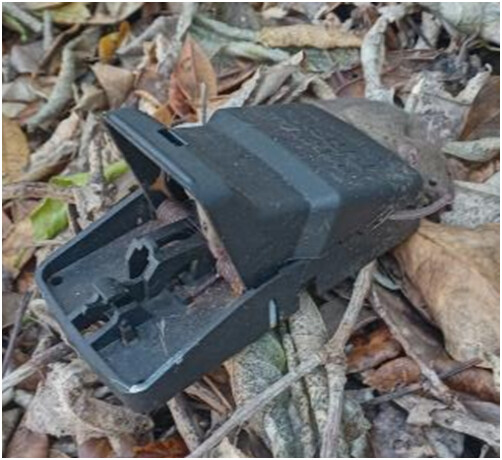Sorry for not replying sooner, but the weather here has been great, so I’m trying to take advantage of it.
Those are crazy numbers with 1 snap trap!
Were you trapping mice/small rats with the trap, too?
Thanks for the compliment. I didn’t think there was much point in reviewing a trap if I didn’t go into detail and share my experiences with others. At some point, I’m going to revise the post, adding photos and more tips.
When you run out of the tape you’re using, I’d replace it with white duct tape, because it will be easier to see the traps from a distance and duct tape last for ages, because it’s strong, waterproof, and UV-resistant.
General trapping tips (feel free to skip these, because I don’t know how much experience you have and how much experimenting you’ve done).
Do you keep records? If not, it’s worthwhile, because it’s the best way to increase your trapping-rates. As a rule, a small number of traps will make up the majority of your kills, because they’re in the sites with the most rat traffic. If Tunnel A is averaging 15 rats per year, and Tunnel B at the neighboring property is averaging 3, add B to A. Over the course of a year, your kills will increase significantly. For one thing, you’ll start to get 2 kills per night, instead of 1. When 1 rat stops to investigate Tunnel A and is killed, the next rat is likely to investigate Tunnel B. With daily checks, you could/should make a way bigger dent in local rat populations.
If you can narrow down the sites with the most traffic, and combine tunnels at those sites, you will be able to check the tunnels much faster, making 8 stops, instead of 20, for example.
I wouldn’t use PB all the time, because rats like variety in their diet. PB’s a good lure, overall, and it’s a good, sticky base lure, but even squishing a sultana or a dried cranberry on top of PB could result in an uptick in kills. If a rat has had its nightly fill of protein and fat, a piece of sugar-rich dried fruit should be a more attractive lure than PB.
Rats love Nutella, so buy a small jar of off-brand Nutella and use it for a few weeks, instead. You could conduct a mini-experiment by using PB in every second tunnel and record the results for a month. Because you’re check 20 tunnels daily, you’d collect a lot of data in no time.
I haven’t tried this, yet, but avocado is reputed to be one of rats’ favourite foods, so I’d give that a go. One small avo would probably fill up all of your cups.
Because there will be pets at most of the properties where you have tunnels, presumably, putting animal fat in the TR cups would be risky in terms of interference, but you would probably experience a significant spike in kills.
Cheers.
